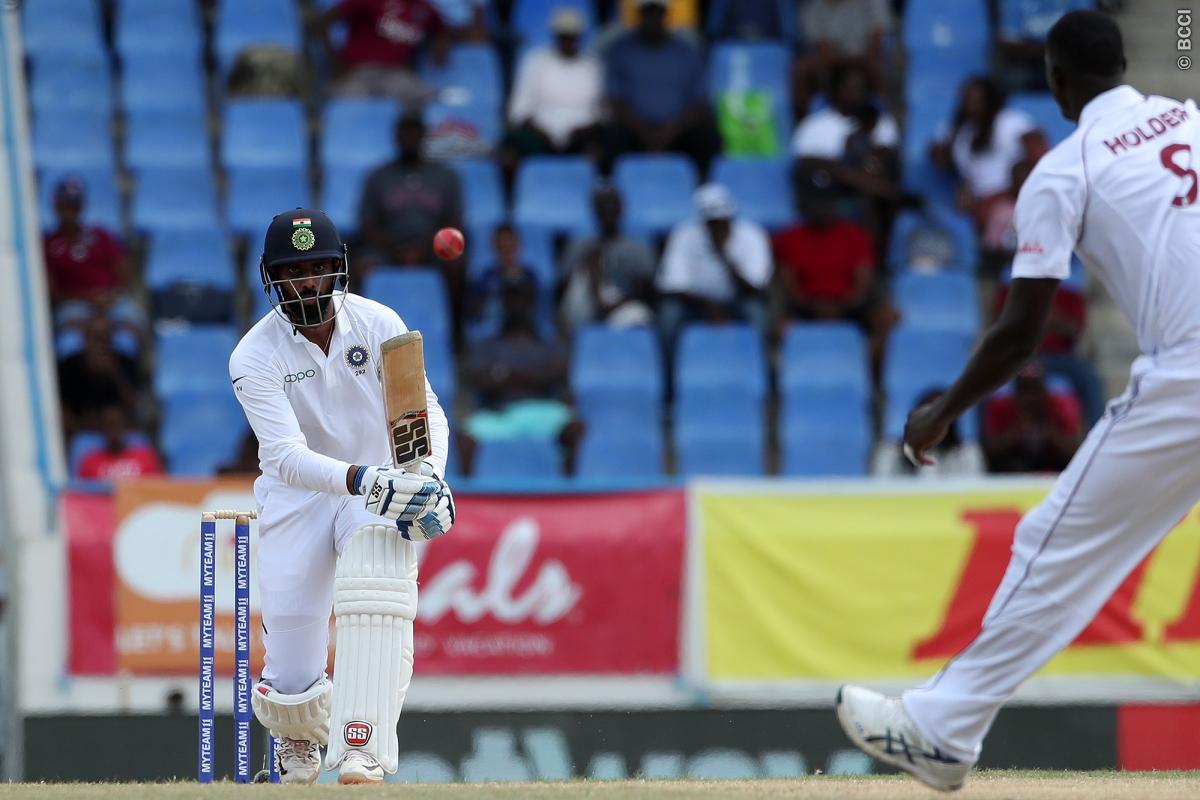WI vs IND | Antigua Day 1 Talking Points - The Caribbean pace revolution and Hanuma Vihari’s unfinished business
On the rain-affected first day, India ended with 203/6 with Rishabh Pant and Ravindra Jadeja batting in the middle when rain forced the umpires to call for early stumps. While Windies pacers rose to the occasion once again, Hanuma Vihari’s failure raised a question or two about his technique.

Fire in Babylon burns bright again
It is always revelry in the Caribbean Island. A smile on the face, and then some sneering pace coupled with those vicious bouncers, the memories in the Island can still bring fear of god into those watching on Television sets back in the 70s and 80s. Not long ago, even in the 1990s, the likes of Curtly Ambrose, Courtney Walsh, Franklyn Rose, Reon King, and last but not least, Ian Bishop were breathing fire with the inimitable proposition.
That, however, was the end of a long link of the Carribbean fast bowling and it was never the same again. The likes of Fidel Edwards, Corey Collymore, Pedro Collins, and Jerome Taylor were good but in no way, they were what compared to the generation preceding them. The sustained pace and hostility was a story of the lore and it took a really long, long time for the Windies to burn the fire in Babylon in full flow which was on show today.
Kemar Roach mustered enough seam movement to trouble Virat Kohli and Cheteshwar Pujara before him, while Shannon Gabriel was the wrecker in chief with the large amount of seam and bounce that he was generating. The swing confused the Indian batsmen to such an extent that they resorted to an angled batting position with the inswingers being treated to the off-side more often than not. Apart from Ajinkya Rahane, and Hanuma Vihari after him, no one could really dictate the course of the wicket.
The major reason behind the same can be attributed to a decision made almost eight years ago. When Ottis Gibson forced the change of Kookaburra to Duke’s ball for home Tests for more exciting cricket, it hindered due to the nature of pitches. A careful change in that to aid the pace attack they have helped the Windies big-time and now, we are seeing the resurgence first-hand.
Ajinkya Rahane - finally finding the feet but can he sustain long
For a batsman known for his comfortable run of form in the difficult conditions, Ajinkya Rahane’s form has plummeted in the last three years faster than the box office collection of any Salman Khan movie nowadays. It is in someway a distillation of how stocks have dropped and there was a sword of Damocles hanging firmly over his head. He needed a moment of his own to destabilise the proceedings and find him relevant again in Indian cricket and his innings in Antigua did just that.
A 70 in Adelaide and a 51 in Perth was followed another string of poor scores and the only thing that had kept him in the team was the role of vice-captaincy and the hope, which evidently had come to the point of clingy, that he would fire one-day. In Antigua, with the chips down and India reeling at 25/3 after losing two of their match-winners to the pavilion, Rahane forged an innings of skill and temperament. Rahul gave brilliant support before Rahane donned the aggressor role to the less-illustrious company of Hanuma Vihari and Rishabh Pant. The innings eventually ended with an ugly inside-edge, not quite the way he would have hoped for it to.

 © BCCI
© BCCIConsidering the situation that he was batting, it was a fine inning but like every Rahane innings of the last few years, it ended up being a promising one while it actually could have been a lot more. It is safe to say that he has slammed the door on the face of his good friend and another Mumbaikar Rohit Sharma for the next game but the key for his long-term future will be how he performs in the next three innings. It's Rahane's to swim or sink from here on and opportunity or the lack of it won’t pass on as an excuse.
Hanuma Vihari’s unfinished business
Hanuma Vihari loves to bat. If it is a business, then Vihari is probably the first person that you will run into to invest in shares. He can make batting look boring but at the same time, he can make a case for himself to be the most reliable batsman around in the Indian domestic cricket. However, once he graduated to the level that he always thought he belonged, there has been a sudden stop in the influx of run-flow and unfortunately, it is coming at a cost. Why did it have to be this way?
A 56 on debut, albeit a lucky one at that, against England at The Oval in 2018 was sufficient reason for the selectors and the team management to believe that he can be the real gambler that the team needed to fix its batting issue in overseas conditions. Vihari didn’t really disappoint but his technique - with a high back-lift and more than usual forward stride - made things tougher on bouncy conditions.
While the instability about the batting position didn’t help the cause, Vihari was a part to blame for the 24.87 average as compared to his FC average of a shade over 60 when he made his international debut. His batting, anachronistic in the time of heavy bats, was based purely on hand-eye coordination and the subsequent movement of feet. But in what has come as a pattern in his batting, he was either caught for room inside the crease or failed to negotiate the seam movement by remaining static.
As biomechanics suggests, it must have added extra lift on his body, making him uncomfortable to navigate. If that actually is an issue, then the coaching management needs to be proactive enough to work on that, to keep one of the biggest hopes in the Indian middle-order away from major missing as the home season beckons.

Comments
Sign up or log in to your account to leave comments and reactions
0 Comments